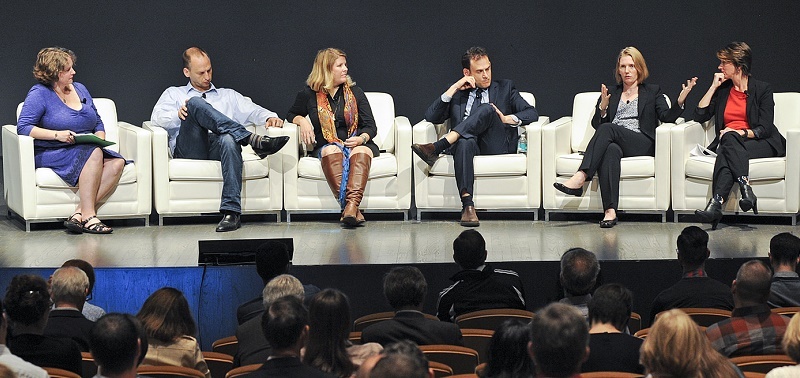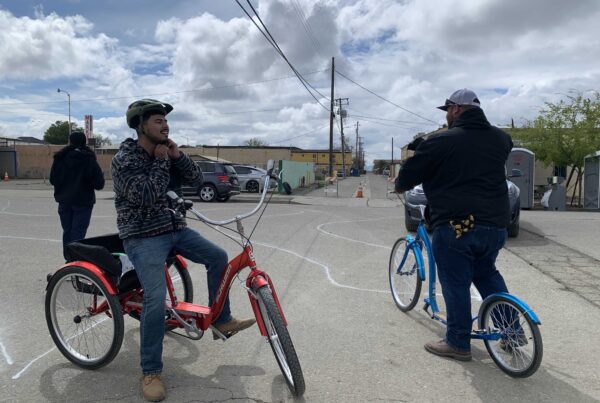While many cites have been forced to react to new, emerging forms of shared mobility on their streets, others have taken a proactive approach by developing pilots, programs and policies that integrate and expand these new services for residents.
Department of Transportation directors from cities on the front lines of shared mobility – including Chicago, Washington D.C., Los Angeles, Portland and Seattle – gathered recently at the national Move Together summit in Chicago to discuss the changes they are experiencing and the approaches they’ve used to foster innovation while preserving transportation access and choice.
Each city undoubtedly has its own unique set of mobility challenges and opportunities. However, the panelists offered several takeaways that can apply to many regions, including:
Experimentation in the public sector is important, involving risks but significant rewards
In the public sector, it’s often easier to say no than to take a chance on a new project or idea. Yet, without exception the panelists defied that inertia and found ways to say yes to innovation in their cities.
“You have to recognize that as a public official who is trying to do something innovative, your experimentation may not always be popular,” said Scott Kubly, director of the Seattle Department of Transportation (SDOT). However, you can’t let that hold you back, he said.
Often, the best way for the public sector to experiment with innovative solutions is by implementing smaller pilot projects. While these projects can be limited in scope, they have the potential to make an outsized impact. For example, the initial success of Seattle’s 350-space on-street carshare parking pilot in 2013 led its city council to later expand the program. Two years later, more than 70,000 Seattle residents are using one-way carsharing, which has resulted in thousands of people ditching their private autos.
Another success story is Chicago’s Divvy bikeshare system, which started as a pilot in 2013 and has now expanded to become one of the largest and most successful in the nation.
“Divvy has made great strides,” said Chicago Department of Transportation (CDOT) Commissioner Rebekah Scheinfeld. “The biggest problem now is people complaining that it’s not getting to their neighborhood fast enough.” According to Scheinfeld, CDOT is currently working on the next level of maturation for the system, including growing its reach to serve a more geographically and economically diverse ridership through its Divvy for Everyone program – another experiment that Scheinfeld is excited about.
Pursuing partnerships with the private sector can help cities expand mobility
Many cities have begun partnering with private shared mobility operators to expand transportation service for residents, which can help save both time and money. New shared modes such as bikesharing, carsharing and microtransit can be put into place quickly, are relatively nimble, and have been shown to help extend the reach of existing public transit systems by providing new first/last mile connections.
Most bikesharing systems launched in the U.S. in the last few years have been public-private partnerships. Additionally, many cities have agreements with carsharing operators that allow them to use street space and parking near rail lines for both one-way and round-trip vehicles. Recently, transit agencies such as Dallas Area Rapid Transit (DART) and the Metropolitan Atlanta Rapid Transit Authority (MARTA) have partnered with Uber and Lyft to link mobile apps and encourage more cross-model connections.
“In Chicago, shared mobility is at the core of transportation quality of life issues,” said CDOT’s Rebekah Scheinfeld. “It is important to think about how traditional transportation options can complement new options on the horizon.”
To establish a successful public-private partnership, panelists also emphasized that cities and private operators need to have a clear understanding of their respective roles.
“How can government partner with the private sector to fill gaps?” said Scheinfeld. “You have to start by recognizing what the core competencies are for government, what they are for the private sector, and working to leverage that.”
Los Angeles Department of Transportation General Manager Seleta Reynolds agreed. “What is our role as people who price and control access to the system to incentivize the outcomes that we want?” she said. Reynolds suggested DOTs should also consider the role they’ll play in the coming years as new technologies such as autonomous vehicles begin showing up on city streets. “It’s not so scary to talk about taking away roadway space before these things arrive,” she said. “We should be at the forefront of advocating for the future we want.”
The public sector must take the lead on ensuring all residents have good mobility options
Just because public and private sector operators can be good partners doesn’t mean they necessarily have the same end goals.
“The private sector is designed to make money, not do good,” said SDOT’s Scott Kubly. “Social equity needs are tangential. The role of government is to set the landscape in which they operate.”
DOTs across the nation are working to find ways to regulate shared mobility providers to encourage the provision of affordable services that cover their entire city while not inhibiting providers’ growth.
In Seattle, SDOT recently passed an ordinance that requires carsharing programs to serve all the city’s neighborhoods, including lower income areas, after two years of operation. Sam Zimbabwe – Associate Director of Policy, Planning and Sustainability for the District Department of Transportation – also discussed how his agency set regulations that required carsharing operators to locate cars in each of DC’s eight wards and share data showing the status and location of their on-street parking spaces.
According to Leah Treat, Director of the Portland Bureau of Transportation, a city’s equity responsibilities also extend to ensuring climate and air quality goals are reached.
“How people get around – transportation – is central to global warming,” she said. “Reducing climate impact is fundamental. We’re pushing walking, biking and transit to get people out of cars. It should be the responsibility of every government.”
DOTs can help reach residents effectively by partnering with local community groups
Another way DOTs can help ensure the success of their equity efforts is by partnering with community-based organizations to engage underrepresented groups in new mobility options.
“In L.A., there are lots of advocacy groups, and they all have transportation in their portfolios,” said Reynolds. “You want to leverage nonprofits and advocacy groups to help spread the word. Government’s role is to grow the capacity of those groups.”
She also referenced the key role that community outreach is playing with a first-of-its kind carsharing pilot project focused on serving low-income residents in L.A., and in helping people overcome mistrust of a new and unfamiliar mode of transportation.
The goal of the three-year pilot, which will be funded with $1.6 million in state cap-and-trade revenues, is to reduce greenhouse gas emissions by introducing electric carsharing fleets into disadvantaged communities. SUMC, which is working with the City of Los Angeles to design and implement the carsharing pilot, will help create pricing structures for low-income users and build support among local stakeholders and community organizations.
Encouraging a community to take ownership of a project can help ensure that its benefits extend to all residents, added Reynolds.
“In Portland, we’re very focused on neighborhood coalitions,” said PBOT’s Leah Treat. “There is so much power in advocates speaking to elected officials…there’s a lot of emotional energy to be harnessed.” However, she also suggested that groups need to be sure their advocacy efforts are pointed in the right direction – at elected officials, not at technical bureaucrats.
At the end of the day, encouraging innovation and increasing access to transportation isn’t easy – especially given the constraints under which many city and state governments are currently operating.
“It’s important that we celebrate each other’s success and progress,” said CDOT’s Rebekah Scheinfeld. “We need to appreciate incremental improvements and collectively support each other more.”
For more information on the Move Together summit, be sure to check out our recap on Storify. SUMC will also continue tracking best practices and developing resources to help cities explore and integrate new modes of shared mobility. Forthcoming products include a Shared Mobility Policy Database with more than 600 policies and plans as well as an opportunity analysis and interactive mapping tool to help cities identify transportation gaps and better understand where greater transportation service is needed.



